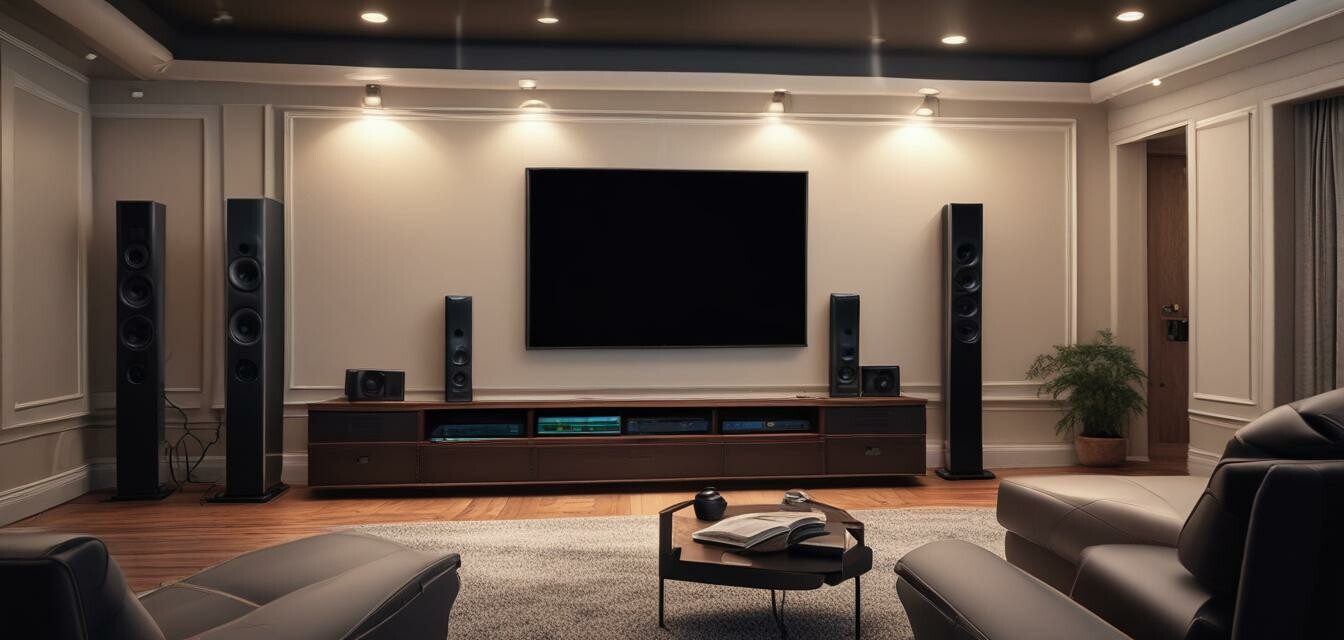
How to Choose Premium Cables for Your Home Theater
Key Takeaways
- High-quality cables ensure better audio and video performance.
- Understand different types of cables and their uses.
- Look for features such as gold-plated connectors and fiber optic technology.
- Consider the length and future-proofing your setup.
Choosing the right cables for your home theater is essential for experiencing top-notch audio and video quality. From soundbars to projectors, the cables you select can significantly impact your overall setup. In this guide, we will discuss how to pick the best premium cables, key factors to consider, and highlight some recommended products.
The Importance of Quality Cables
Investing in premium cables will ensure that you are getting the most out of your home theater system. Poor-quality cables can result in signal loss, reduced audio clarity, and distorted video. To achieve the optimal performance of your high-end home theater components, choose the right cables.
Types of Cables for Home Theater Systems
| Type of Cable | Purpose | Key Features |
|---|---|---|
| HDMI Cable | Transmits high-quality video and audio. | Supports 4K, HDR, and Ethernet communication. |
| Optical Fiber Cable (TOSLINK) | Transmits digital audio signals. | Immune to electrical interference, ideal for long distances. |
| Speaker Wire | Connects speakers to the receiver/amplifier. | Gauge size affects power transfer and performance. |
| Component Video Cable | Splits video signals into three components. | Best for high-definition video quality. |
| Subwoofer Cable | Connects subwoofers to receivers. | Typically shielded to prevent interference. |
Choosing the Right Cable
When selecting cables, several factors come into play:
- Compatibility: Ensure the cables are compatible with your devices.
- Length: Measure the distance between components to avoid signal loss or quality degradation.
- Durability: Look for cables with sturdy connectors and quality insulation.
- Future-Proofing: Consider investing in cables that support higher specifications to prepare for future upgrades.
Recommended Premium Cable
For optimal audio performance, we recommend the TOSLINK Cable, Optical Audio Cable. This 6-foot short fiber optic cable is perfect for soundbars and maintains excellent signal quality with its 24K gold-plated connectors. Below are the key details:
TOSLINK Cable, Optical Audio Cable
This 6-foot fiber optic cable ensures crystal-clear audio performance with immune to electrical interference design.
Learn MoreAdditional Components to Consider
Along with cables, you should pay attention to other components for your home theater system:
- Acoustic Treatments: Improve sound quality in your space by minimizing echo and reverberation.
- Cable Management: Organize your cables to enhance aesthetics and prevent damage.
- Receiver/Amplifier: The core of your system, ensure it supports the necessary connections and formats.
Final Thoughts
Choosing the right cables for your home theater system might seem tedious, but it pays dividends in audio and video performance. Opt for high-quality products tailored to your specific needs. By understanding the different types of cables and their features, you can elevate your home theater experience.
Tips for Beginners
- Start with essential cables like HDMI and power cables before expanding.
- Prioritize shielding on cables to avoid interference.
- Invest in high-quality connectors; they make a big difference in performance.
Pros
- Enhanced audio and video quality.
- Durable and long-lasting performance.
- Immune to interference when using premium materials.
Cons
- Higher upfront cost compared to standard cables.
- Potentially overkill for basic setups.
Explore More Resources
For more information on home theater solutions, check out our additional resources on:


